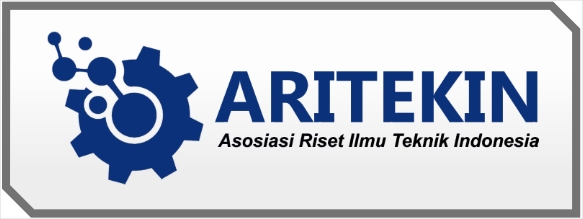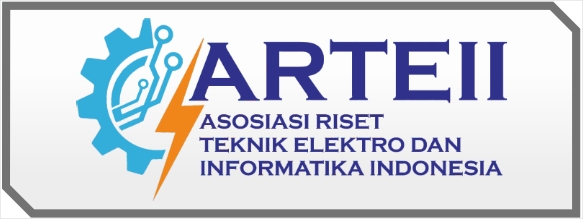Klasifikasi Tutupan Lahan di Kabupaten Trenggalek Menggunakan Google Earth Engine
DOI:
https://doi.org/10.59581/jkts-widyakarya.v2i3.3488Keywords:
Satelit Imagery, Confusion Matrix, ClassificationAbstract
Land cover is defined as the physical and biological cover of the earth's surface, both those formed naturally such as swamps, hills and rivers and those formed by man-made means such as rice fields, gardens, forests and buildings. As technology develops, conventional methods of satellite image processing are starting to be abandoned. This is because conventional methods require quite a long time to process satellite image data. The presence of Google Earth Engine (GEE), which is a cloud computing-based platform, makes it easier for users to process satellite image data boldly and for free. This research aims to classify satellite image land cover in the Trenggalek Regency area, East Java. The level of accuracy in this study uses a confusion matrix. The accuracy test results show a value of 90.23%.
References
Alfiyanti, Y. D., Ratnawati, D. E., & Anam, S. (2019). Klasifikasi fungsi senyawa aktif berdasarkan data Simplified Molecular Input Line Entry System (SMILES) menggunakan metode Modified K-Nearest Neighbour. Jurnal Pengembangan Teknologi Informasi Dan Ilmu Komputer, 3(4), 3244–3251.
Arisondang, V., Sudarsono, B., & Prasetyo, Y. (2015). Klasifikasi tutupan lahan menggunakan metode segmentasi berbasis algoritma multiresolusi. Jurnal Penginderaan Jauh dan Pengolahan Data Citra Digital, 4, 9–19.
Kumar, L., & Mutanga, O. (2018). Google Earth Engine applications since inception: Usage, trends, and potential. Remote Sensing, 10(10), 1–15. https://doi.org/10.3390/rs10101509
Latue, P. C., Rakuasa, H., Somae, G., & Muin, A. (2023). Analisis perubahan suhu permukaan daratan di Kabupaten Seram Bagian Barat menggunakan platform berbasis cloud Google Earth Engine. Sudo Jurnal Teknik Informatika, 2(2), 45–51. https://doi.org/10.56211/sudo.v2i2.261
Marwati, A., Prasetyo, Y., & Suprayogi, A. (2018). Analisis perbandingan klasifikasi tutupan lahan kombinasi data Point Cloud Lidar dan foto udara berbasis metode segmentasi dan supervised (Studi kasus: Tanggamus, Lampung). Jurnal Geodesi Undip, 7(1), 36–45.
Novianti, T. C. (2021). Klasifikasi Landsat 8 OLI untuk tutupan lahan di Kota Palembang menggunakan Google Earth Engine. Jurnal Swarnabhumi, 6(1), 75–85. http://code.earthengine.google.com/
Nurzanah, W. (2019). Penentuan lokasi pembuangan material keruk alur pelayaran pelabuhan Belawan dengan sistem informasi geografis. Buletin Utama Teknik, 14(2), 80–91.
Rakuasa, H. (2022). Analisis spasial-temporal perubahan tutupan lahan di Kabupaten Maluku Barat Daya. GEOGRAPHIA: Jurnal Pendidikan Dan Penelitian Geografi, 3(2), 115–122. https://doi.org/10.53682/gjppg.v3i2.5262
Septiani, R., Citra, I. P. A., & Nugraha, A. S. A. (2019). Perbandingan metode supervised classification dan unsupervised classification terhadap penutup lahan di Kabupaten Buleleng. Jurnal Geografi: Media Informasi Pengembangan Dan Profesi Kegeografian, 16(2), 90–96. https://doi.org/10.15294/jg.v16i2.19777
Seran, A. M. D., Ngana, F. R., & Pian, M. (2022). Pemetaan wilayah lahan kering menggunakan penginderaan jauh di wilayah Kecamatan Kupang Tengah, Kabupaten Kupang. Jurnal Fisika: Fisika Sains Dan Aplikasinya, 7(2), 42–47. https://doi.org/10.35508/fisa.v7i2.9345
Simonetti, D., Simonetti, E., Szantoi, Z., Lupi, A., & Eva, H. D. (2015). First results from the Phenology-Based Synthesis Classifier using Landsat 8 imagery. IEEE Geoscience and Remote Sensing Letters, 12(7), 1496–1500. https://doi.org/10.1109/LGRS.2015.2409982
Sugandhi, N., Supriatna, S., Kusratmoko, E., & Rakuasa, H. (2022). Prediksi perubahan tutupan lahan di Kecamatan Sirimau, Kota Ambon menggunakan Celular Automata-Markov Chain. JPG (Jurnal Pendidikan Geografi, 9(2). https://doi.org/10.20527/jpg.v9i2.13880
Ying, Q., Hansen, M. C., Potapov, P. V., Tyukavina, A., Wang, L., Stehman, S. V., Moore, R., & Hancher, M. (2017). Global bare ground gain from 2000 to 2012 using Landsat imagery. Remote Sensing of Environment, 194, 161–176. https://doi.org/10.1016/j.rse.2017.03.022
Downloads
Published
How to Cite
Issue
Section
License
Copyright (c) 2024 Jurnal Kendali Teknik dan Sains

This work is licensed under a Creative Commons Attribution-ShareAlike 4.0 International License.













